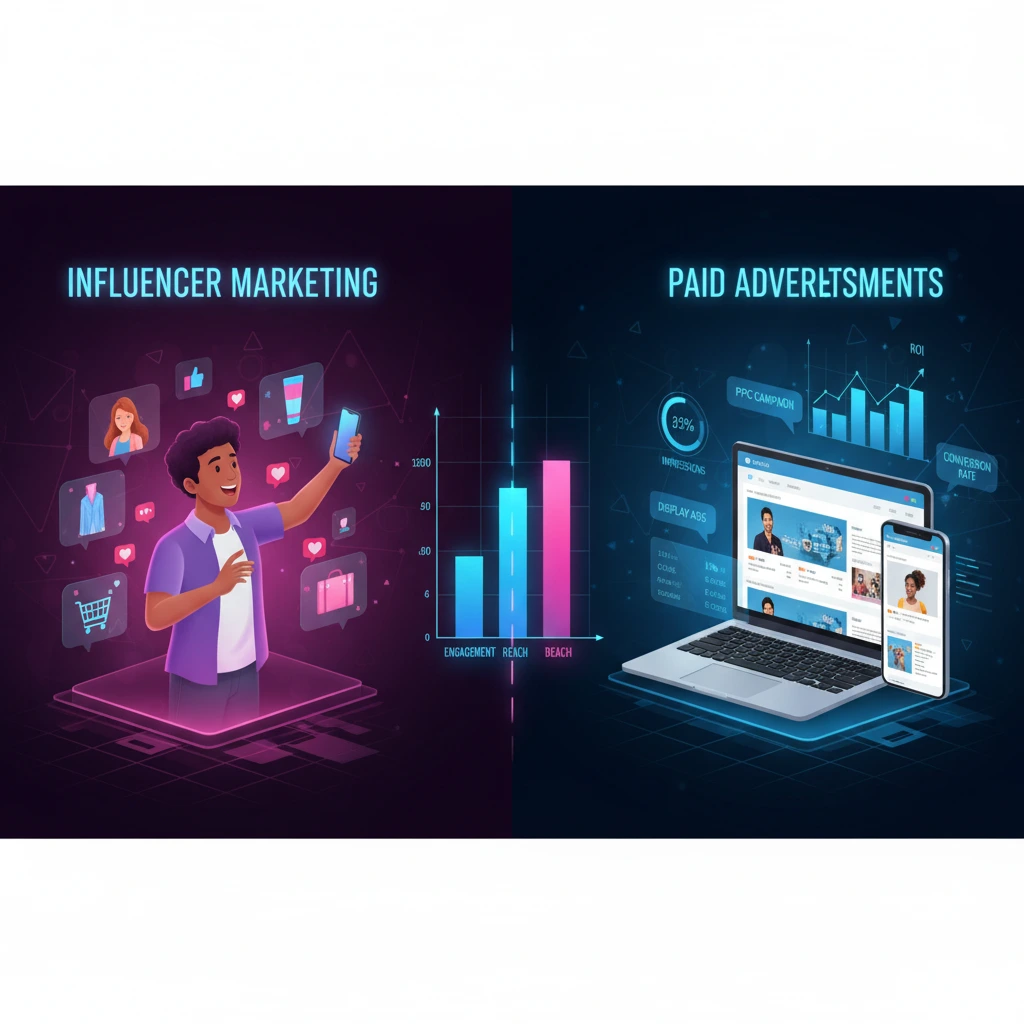E-commerce brands are constantly looking for strategies to drive traffic, increase sales, and build brand awareness. Two of the most popular approaches are influencer marketing and paid advertising. Both strategies have their benefits, but they serve different purposes and deliver different results. Understanding the strengths and limitations of each can help brands optimize marketing budgets and achieve long-term growth.
What Is Influencer Marketing?
Influencer marketing involves collaborating with social media personalities or content creators to promote your products. These influencers have built trust with their audience and can sway purchasing decisions through authentic content. Platforms like Instagram, TikTok, and YouTube have made influencer campaigns more accessible, even for small e-commerce businesses.
Influencers can be categorized by their follower count:
- Nano-influencers (1k-10k followers) often have highly engaged niche audiences.
- Micro-influencers (10k-100k followers) provide a balance of reach and engagement.
- Macro-influencers (100k-1M followers) and mega-influencers (1M+ followers) offer broad visibility but come at a higher cost.
The key benefit of influencer marketing is authenticity. Followers trust influencers’ opinions, which often translates into higher engagement and conversion rates compared to traditional ads.
What Are Paid Ads?
Paid advertising refers to promotional campaigns where businesses pay to display ads across platforms like Google, Facebook, Instagram, TikTok, or programmatic ad networks. Paid ads come in many forms:
- Search Ads target users actively searching for products or services.
- Display Ads appear on websites and apps, often using visuals to grab attention.
- Social Media Ads reach audiences based on demographics, interests, and behavior.
- Retargeting Ads focus on users who have previously visited your website or engaged with your content.
The main advantage of paid ads is control. Brands can define budgets, target audiences, and campaign duration precisely, and measure performance using analytics and ROI metrics.
Influencer Marketing vs Paid Ads: Key Differences
1. Trust and Authenticity
Influencer marketing thrives on credibility. Consumers are more likely to purchase a product recommended by someone they follow and trust. Influencers can create relatable content that feels natural, making the brand message less intrusive.
Paid ads, on the other hand, are often seen as promotional and can be ignored by users who use ad-blockers or scroll past sponsored content. While ads offer exposure, they don’t inherently build trust.
2. Reach and Scalability
Paid advertising provides instant scalability. You can reach thousands or even millions of potential customers immediately, adjust targeting, and scale campaigns quickly based on performance data.
Influencer marketing grows more organically. While viral campaigns can reach massive audiences, most collaborations are limited by the influencer’s following. Scaling requires engaging multiple influencers, which can be time-consuming and complex.
3. Cost and ROI
Influencer marketing can be cost-effective for niche audiences, especially with micro or nano-influencers. Brands often pay via free products, commissions, or flat fees, and ROI depends on engagement and conversions.
Paid ads offer predictable costs. Platforms allow precise bidding, targeting, and budget control, making it easier to measure ROI. However, competition can increase cost-per-click (CPC) or cost-per-acquisition (CPA), especially in competitive e-commerce niches.
4. Long-Term Brand Value
Influencers can contribute to brand storytelling and long-term awareness. Consistent partnerships help build a loyal customer base, create social proof, and improve brand credibility over time.
Paid ads are more transactional and typically generate short-term results. Once the budget stops, traffic and sales may decline unless sustained campaigns are maintained. They’re excellent for immediate conversions but less effective for long-term brand loyalty.
When Influencer Marketing Works Best
Influencer marketing is ideal when your goal is:
- Building brand awareness with niche or targeted audiences.
- Creating authentic content that resonates with consumers.
- Launching new products where social proof matters.
- Engaging younger demographics like Gen Z or millennials, who value peer recommendations.
Campaigns that incorporate user-generated content, influencer takeovers, or unboxing videos often see higher engagement and organic reach.
When Paid Ads Work Best
Paid advertising is most effective for:
- Driving immediate sales during promotions or seasonal campaigns.
- Targeting broad or specific demographics quickly.
- Retargeting customers who visited your website but didn’t convert.
- Scaling successful campaigns with measurable ROI.
Paid ads are particularly useful when you need predictable results and want to complement organic strategies like influencer marketing or SEO.
Combining Influencer Marketing and Paid Ads
The most successful e-commerce brands often combine both strategies. For example, an influencer campaign can generate organic buzz, and paid ads can amplify that content to a wider audience. This hybrid approach leverages the trust and engagement of influencers while using the precision and scalability of paid advertising.
Brands can also repurpose influencer content as ad creatives. User-generated videos and images perform better than traditional stock visuals in paid campaigns because they feel authentic and relatable.
Measuring Success
To evaluate which strategy works better for your e-commerce brand, track key metrics:
- Influencer Marketing: Engagement rate, follower growth, website traffic from influencer links, and conversions.
- Paid Ads: Click-through rate (CTR), cost-per-click (CPC), conversion rate, and return on ad spend (ROAS).
Combining analytics from both channels can help identify which approach drives long-term growth versus short-term sales.
Conclusion
Both influencer marketing and paid ads have unique strengths for e-commerce brands. Influencers excel at building trust, authenticity, and long-term brand value, while paid ads provide control, scalability, and immediate results.
The key is not to choose one over the other but to strategically integrate both. Influencer collaborations can create buzz and credibility, while paid ads can amplify reach and conversions. By combining these approaches, e-commerce brands can maximize visibility, engagement, and sales in a competitive online market.
In 2025, the brands that succeed will be those that understand the balance between authentic storytelling and data-driven advertising—leveraging influencers to build trust and paid ads to scale results.

Leave a Reply